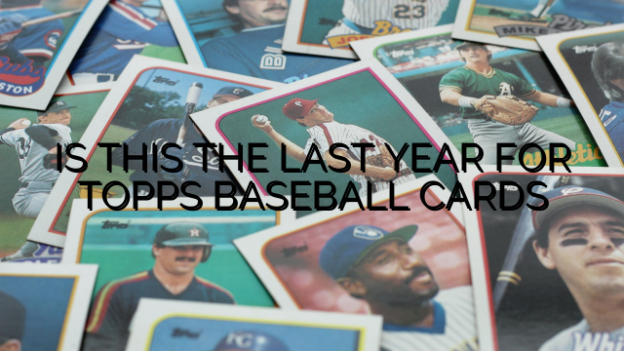While Topps baseball cards have been a staple of the baseball card collecting hobby for decades, 2022 does represent major change and uncertainty for the future of Topps and their baseball card license. It is too early to say definitively that 2022 will be the absolute last year for Topps baseball cards.
Topps has held the exclusive license to produce Major League Baseball player cards since 1981. Their current license expired after the 2021 season. In late 2021, Major League Baseball opted not to renew their license exclusively with Topps, instead choosing to partner with Fanatics, the dominant online seller of sports merchandise, memorabilia and collectibles.
Fanatics then signed a multi-year deal to be the exclusive producer and licensor of MLB player cards and trading cards starting in 2026. However, Topps was still granted a non-exclusive license to produce baseball cards through the 2025 season as part of a separate bridge agreement they made with MLB.
So while Topps lost their monopoly on the MLB player license, they do still have approval to make traditional baseball cards through 2025. Whether or not they choose to exercise that full license or not remains unclear. Topps may see reduced production and promotion of baseball cards in the coming years as Fanatics starts making their own MLB cards in 2026 with the full backing of the league.
There are also additional complicating factors that could impact Topps’ long-term participation in the baseball card market. Perhaps most significantly, Fanatics acquired Topps as a whole in January 2022 for around $500 million. So while Topps and Fanatics were competitors for the MLB license, they are now under the same corporate ownership.
Some industry analysts have speculated that Fanatics’ new ownership of Topps could mean they may scale back Topps’ baseball card offerings sooner than 2025 in order to more quickly transition the baseball card business fully under the Fanatics brand name. Others argue Fanatics may want both brands operating separately to maintain choice for collectors. But ultimate decisions will be up to Fanatics’ leadership.
Another consideration is the recent boom in popularity of digital collectibles and mainstream interest in NFTs (non-fungible tokens). Both Fanatics and Topps have been leaders in the online collectibles market and see potential opportunities there. It’s possible traditional paper baseball cards could see reduced focus and resources applied as companies explore greater profits in digital spaces.
And while baseball cards remain a popular part of the sports collectibles industry, there are signs of weaker growth and interest compared to the 1980s-90s peak. Declining popularity among young people could make Topps and Fanatics reconsider the profitability of paper baseball cards in the coming years. Waning interest could cause companies to shift investments elsewhere sooner.
Baseball card collectors and nostalgic fans provide a dedicated customer base that is unlikely to completely abandon paper cards. As long as there remains sufficient collector interest and profits, it’s reasonable to expect Topps to keep making traditional cards through the end of their current MLB license in 2025 barring any unforeseen circumstances.
While 2022 does usher in major changes with Topps losing their exclusive license and coming under Fanatics ownership – it’s too early to say with absolute certainty that this will definitively be the final year for Topps baseball cards without knowing Fanatics’ long-term strategy and how the collector market evolves. Topps still has approval to produce cards through 2025. Continued strong collector interest could prompt companies to preserve the traditional product for several more years. But alternative outcomes are also quite plausible given industry trends and the shift in MLB’s license holder. Only time will tell how Topps’ iconic baseball cards continue, or whether 2022 does indeed end up as their valedictory season after over 70 years of production. But for now, their catalog will keep expanding baseball’s nostalgic allure and link to history for another few years at minimum.

